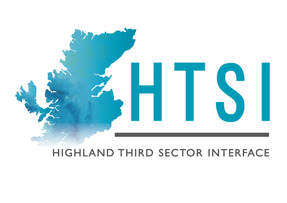If you are thinking about applying for charitable status then there are lots of things you need to think about, including if it is right for your organisation. In Scotland the charities regulator is OSCR or The Office of the Scottish Charity Regulator and you will need to understand their rules, not just to establish the organisation as a charity but also to ensure the organisation is run competently going forward. You should start by making sure you have the right structure, see some suggestions below, and taking it from there.
Applying for charitable status can be really challenging if you haven't done something like this before and the Highland Third Sector Interface can offer application support. It is highly likely that a well written constitution will enable an element of copy and paste, but there is a requirement for qualifying data in some sections, most notably in your activities, which will be unique to you. For each listed purpose you have as an organisation, you are required to reference all charitable activities you intend to undertake to deliver that purpose.OSCR also expect you to explain the benefit to the public.
Aside from activities, you will need to explain education elements, restrictions and Members’ benefits. Remember, that OSCR are less interested in the virtues of the things you are doing. Their role is to simply assess whether or not you meet the charities test. Short succinct answers will enable them to achieve this undertaking more swiftly and easily than if you give them ‘war and peace’.
All applications are now made electronically, and progress can be saved, meaning you don’t have to undertake the entire application at one sitting. It also enables you to check sections and/or answers prior to your submission.
Each person wishing to become a Charity Trustee will complete and upload or submit by post their Charity Trustee Declaration form. This form requires personal details and links a person may have to other Charities.
Remember, if you require additional support you can access this through your Third Sector Interface.
. Key points
Applying for charitable status can be really challenging if you haven't done something like this before and the Highland Third Sector Interface can offer application support. It is highly likely that a well written constitution will enable an element of copy and paste, but there is a requirement for qualifying data in some sections, most notably in your activities, which will be unique to you. For each listed purpose you have as an organisation, you are required to reference all charitable activities you intend to undertake to deliver that purpose.OSCR also expect you to explain the benefit to the public.
Aside from activities, you will need to explain education elements, restrictions and Members’ benefits. Remember, that OSCR are less interested in the virtues of the things you are doing. Their role is to simply assess whether or not you meet the charities test. Short succinct answers will enable them to achieve this undertaking more swiftly and easily than if you give them ‘war and peace’.
All applications are now made electronically, and progress can be saved, meaning you don’t have to undertake the entire application at one sitting. It also enables you to check sections and/or answers prior to your submission.
Each person wishing to become a Charity Trustee will complete and upload or submit by post their Charity Trustee Declaration form. This form requires personal details and links a person may have to other Charities.
Remember, if you require additional support you can access this through your Third Sector Interface.
. Key points
- What are the options for charitable status?
- What are the key requirements in meeting the charities test?
- How to we negotiate the application process?
- Checking who can be a Charity Trustee
- Compliance Reporting for Charities
Different Organisational Structures for Charities
|
Unincorporated Charity This is an appropriate choice for community groups with no significant risks/liabilities. For example, a group who come together to arrange and display flowers or a book group promoting literacy. It is unlikely these groups have unmanageable risks They are unlikely to borrow funds or apply for significant grant revenue. Most importantly, in this type of charity, Trustees undertake business and transactions on behalf of the charity as the charity itself has no legal personality. This means in a situation where a charity is wound up in circumstances of insolvency, Trustees’ individual assets could be at risk. There is no power to limit the liability of Trustees, though risk can be minimised and managed through robust and comprehensive insurance policies. This type of charity is usually accountable to its members, funders, in some cases it’s community (of interest or geographical) and of course OSCR as the regulator. The governing document or constitution for this model Unincorporated Charity – Constitution (This should include: Name; Geographical area of operation; Powers; Equalities; Membership criteria and process; Meetings and meeting parameters; Board Meetings including AGM and E/SGM; Process for elections, retiral and renewal; Voting arrangements; Administration; Alteration of Constitution; and Dissolution.) Company Limited By Guarantee and Charity If a charity has a need or intends to trade out with its charitable purposes (non-primary purpose trading), there may be the need (largely depending on activity type and level of trading income) to set up a ‘trading company’ through which to route revenue generated. An example of this might be a sports club, which sells health supplements and clothing specifically to generate income. As this activity is not charitable, the revenue streams would be recorded separately and in most cases, may require entirely separate bank accounts or at a minimum a separate recording mechanism (an accounting system such as Sage or Quickbooks). As well as being accountable to OSCR, a Company Limited by Guarantee has dual regulation with Companies House. Completed accounts are now acceptable to both regulators in the same format. The governing document or consitution for this model Company Limited by Guarantee – Articles of Association, which is primarily written in the language of the Companies Act (2006) but must also address the requirements of the Charity Trustee and Investments Act (2005). It will include expanded versions of the categories in a basic constitution (This should include: Name; Geographical area of operation; Powers; Equalities; Membership criteria and process; Meetings and meeting parameters; Board Meetings including AGM and E/SGM; Process for elections, retiral and renewal; Voting arrangements; Administration; Alteration of Constitution; and Dissolution.) Scottish Charitable Incorporated Organisation (SCIO) Scottish Charitable Incorporated Organisation (SCIO) – is a ‘company’ type structure specifically for charities, providing legal personality to the organisation. Incorporation enables a SCIO in its own name to:
Most Charities have a two-tier structure, where Charity Trustees and elected from a body of membership. When setting up a membership structure, it is important to understand what your charity wants/needs from membership and what Members can expect form the organisation. When setting up, you should set clearly any parameters e.g. age categories or restrictions and voting rights. The benefits of a general membership are many, including; giving you a mandate, a body from which to assess needs or to consult, creating a sense of identity around your cause or community and increase your funding and fundraising opportunities. There is an option for a single tier SCIO. This type of structure may be appropriate for Family Legacy funds or ‘Friends of’ organisations where for example, the sole purpose is to raise money for another charity or charities. In this scenario, Trustees tend to be recruited. The governing document or constitution for this model SCIO – Similar in structure to a set of Articles of Association, but written exclusively in the language of the Charity Trustee and Investments Act (2005) and templates are advise and available |
Charity test: full guidance
Charity Trustee Duties
Charity Application
OSCR Guide to setting up a SCIO
SCVO Guidance on writing SCIO Documents
SCVO Guidance Unicorporated Charity
SCVO Guidance on Companies Ltd.
|

